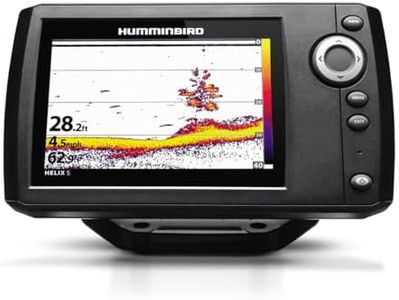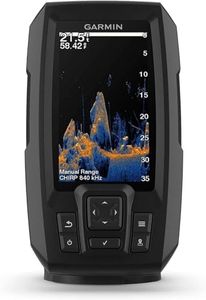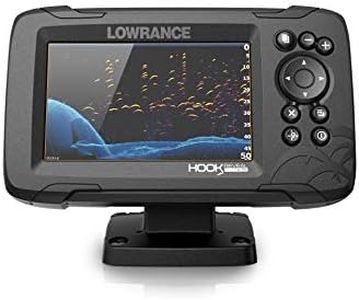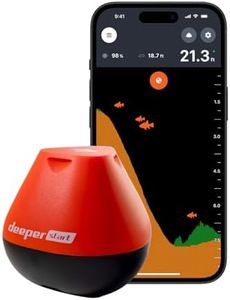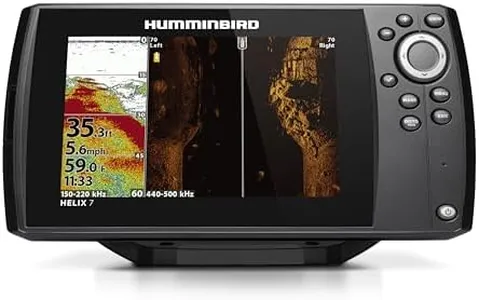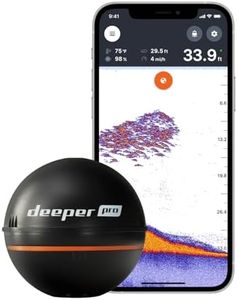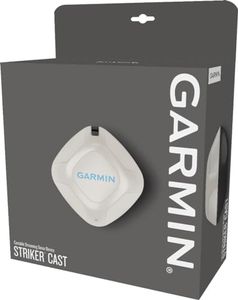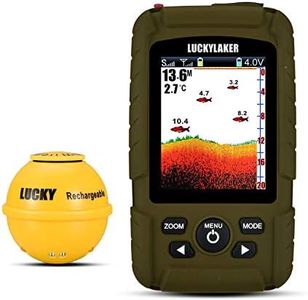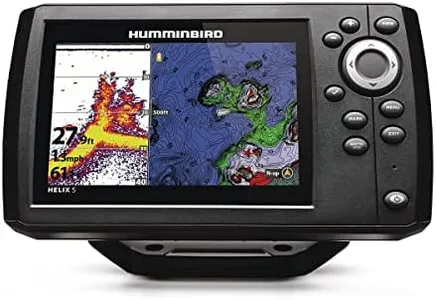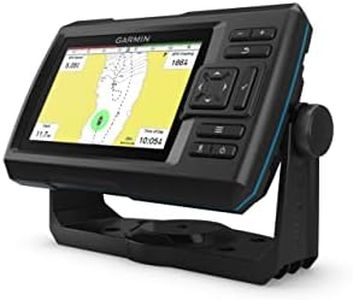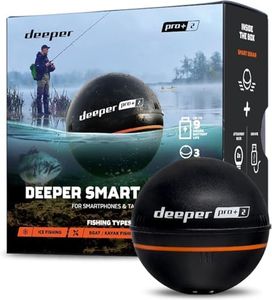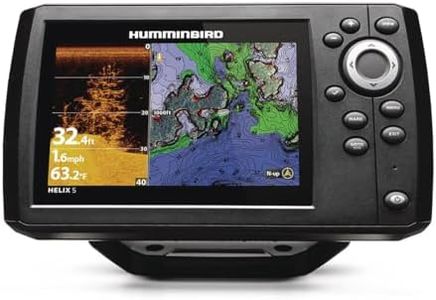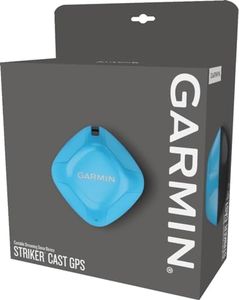We Use CookiesWe use cookies to enhance the security, performance,
functionality and for analytical and promotional activities. By continuing to browse this site you
are agreeing to our privacy policy
10 Best Fish Finders
From leading brands and best sellers available on the web.Buying Guide for the Best Fish Finders
When choosing a fish finder, it's important to recognize that this device helps you locate fish and understand what's under the water's surface. With so many models available and a wide range of features, deciding on the right one can be confusing. Begin by thinking about your usual fishing environment—are you fishing in shallow lakes, deep sea, or rivers? Also, consider how often you fish and how comfortable you are with electronic gadgets. A good fish finder should fit your needs, be easy for you to use, and give you the information you actually need out on the water.Display Size and ResolutionThe display size refers to how big the screen on the fish finder is, while the resolution is about how clear and detailed the image appears. A bigger and higher resolution screen makes it easier to see more details and distinguish between fish, objects, and the bottom structure. Smaller screens work for kayaks or smaller boats where space is tight, while larger displays are better for bigger vessels and those who want more detailed information. If you often fish in bright sunlight or need to read the screen from a distance, prioritize models with larger, high-resolution screens for comfort and clarity.
Sonar TypeFish finders use sonar technology, and the two main types are traditional (2D) sonar and advanced options like CHIRP or side/down imaging. Traditional sonar provides simple depth readings and fish icons but might miss finer details. CHIRP sonar sends multiple frequencies at once, giving clearer, more precise images. Side and down imaging show detailed pictures to the sides or straight beneath your boat, helping you spot fish and structures with more accuracy. Pick the type based on your needs: for casual use, traditional sonar may be enough; for serious fishing or exploring complex underwater areas, advanced imaging brings more value.
Depth CapabilityDepth capability refers to how deep the fish finder’s sonar can effectively scan. Shallow-water users, such as those fishing lakes or rivers, can get by with lower depth ratings. Deep water or saltwater anglers, like those fishing offshore, need fish finders with much higher depth capabilities. Think about the waters you most often fish in—there’s no need to pay for deep-water capability if you’re mostly in shallow areas, but if you like to fish in varied locations, a higher depth range offers more flexibility.
GPS and MappingSome fish finders come with built-in GPS and mapping features. GPS helps you mark favorite fishing spots, navigate safely, and track your route. Mapping capabilities can show you underwater structures, shorelines, and help you find the best fishing zones. If you value navigation and want to return to specific locations, choosing a unit with solid GPS and mapping is smart. If you fish in the same familiar areas and mainly need to know where fish are right now, basic fish finders without these extras may suffice.
Portability and MountingPortability refers to how easy it is to move and set up your fish finder. Some units are designed to be easily taken from boat to boat or used for ice fishing, while others are fixed installations for a specific vessel. River and kayak anglers, or anyone who moves between boats, may benefit from portable models. If you have a dedicated boat and want a permanent setup, fixed mount units offer more power and stability. Consider your fishing style and whether you need to use the device in multiple locations or just one.
Transducer CompatibilityThe transducer is the part that sends and receives the sonar signals. Fish finders may come with a transducer or require you to choose one separately. Compatibility affects what sonar features (like side imaging or CHIRP) you can use and how well the system works in your fishing environment. If you fish in diverse locations or want to upgrade features later, picking a unit with versatile transducer options is helpful. For simple setups, the bundled transducer usually meets most needs.
